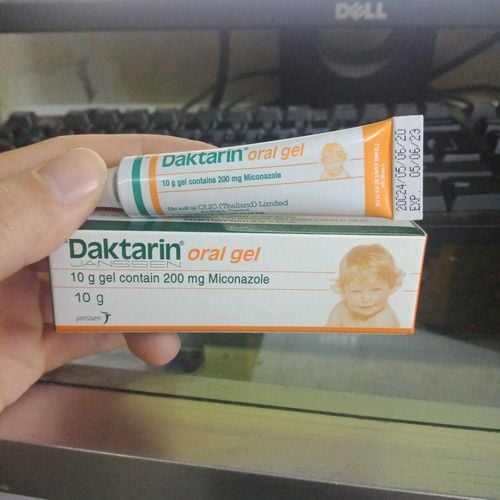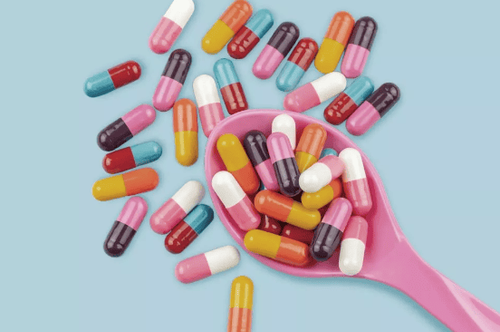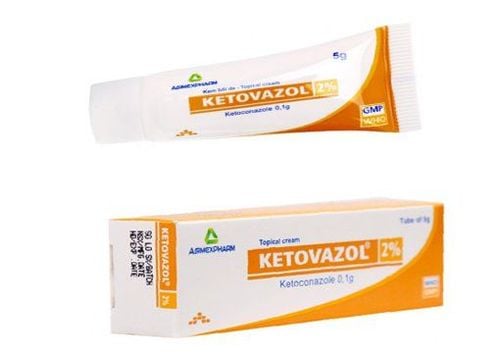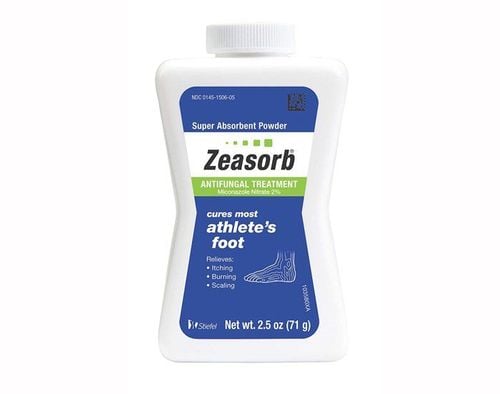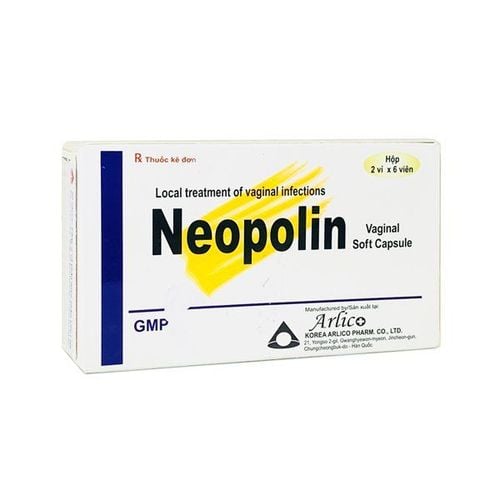This is an automatically translated article.
Posted by Dr. Truong Ngoc Hai - Resuscitation Doctor - Emergency Department - Vinmec Central Park International General Hospital
Invasive fungal infections are systemic fungal infections, including mycotic and deep organ infections (abdominal abscess, peritonitis, osteomyelitis) with/without mycotic infection. The diagnosis and treatment of invasive candidiasis helps patients have good health and quality of life.
1. Definitions and related concepts
Fungal infections, including candida infections of the skin, mucous membranes, and deep-seated organs Fungal infections are the presence of Candida fungi in the blood. Invasive fungal infection: A systemic fungal infection, including mycemia, and/and fungal infection of deep organs (abdominal abscess, peritonitis, osteomyelitis) with/without fungal infection blood1.
2. Causes of invasive candidiasis
2.1. Agent
Invasive fungal infections include Candida albican and non-Candida albican fungi. C.albican is the most common causative agent of invasive fungal infections. Non-C.albican Candida fungi are increasingly common and play an important role in invasive Candida infections, including C.glabrata, C.parapsilosis, C.tropicalis, C.krusei, C.auris....
2.2. Risk factors for invasive fungal infections2
ICU patients, especially those in the ICU for a long time. Abdominal surgery, especially in patients with anastomosis or multiple laparotomy. Hematologic malignancies Organ transplantation Solid organ cancers Neonatal patients, especially those with low birth weight or preterm birth, Use of broad-spectrum antibiotics. There is a catheter placed into the central blood vessel, complete intravenous nutrition. Hemodialysis Use of glucocorticoids or cancer chemotherapy Has Candida suffocation, especially multiple sites (colonization index > 0.5, or corrected colonization index > 0.4)
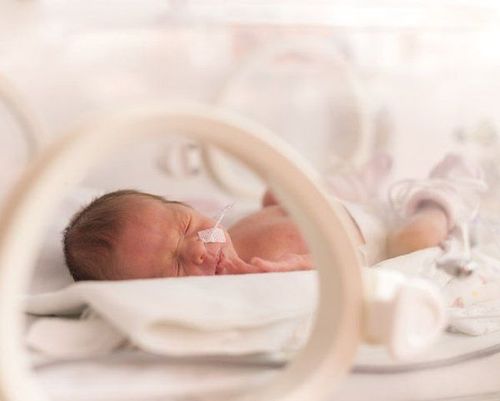
Bệnh nhân nhẹ cân hoặc sinh non có nguy cơ nhiễm nấm candida xâm lấn
3. Clinical manifestations of nonspecific invasive candidiasis
Clinical manifestations of invasive candidiasis are nonspecific, including:
Fever and progressive sepsis with multiple organ failure despite antibiotic therapy. Invasive Candida infection involves skin lesions. Rash, erythema: can be confused with drug allergy. Biopsy of the deep layers of the skin, especially the vascular areas and the dermis. Eye Injury (Candida Endophthalmitis): Fundus evaluation for the presence of Candida endophthalmitis should be performed in patients with candidaemia.
4. Diagnosis of invasive candidiasis
Blood cultures for fungi and cultures of deep tissue specimens for fungi are the gold standard for diagnosing invasive fungal infections. However, the sensitivity is low and it takes time to return the results. Non-implantation diagnostic tests have disadvantages and are not yet popular under current conditions. Therefore, for critically ill patients (in ICU) it is necessary to further evaluate the diagnostic criteria for invasive fungal infections in patients at high risk of fungal infections for early diagnosis and treatment.
4.1. Predictive Scales
Index of encroachment: The number of areas of the body with fungus growing divided by the total number of areas screened is greater than 0.5. Currently, there are no large prospective studies evaluating the sensitivity and specificity of the nuchalization index in the prediction of invasive fungal infections.
Candida scale: The scale includes the following factors: surgery at the time of resuscitation (1 point); complete parenteral nutrition (1 point), severe sepsis (2 points), present from 2 sites with Candida cysts (1 point). With Candida score >= 3 points, sensitivity 81%, specificity 74%, negative predictive value 98%.
Prognostic rule: Patients in ICU for 4 days or more, using systemic broad-spectrum antibiotics or CVC in the first 3 days, with >= 2 of the following risk factors: postoperative, use immunosuppressants, acute pancreatitis, total parenteral nutrition, dialysis, glucocorticoid use.
Predictive rule has a positive predictive value of 10%, a negative predictive value of 97%, specificity of 83%, sensitivity of 50%3.
4.2. Blood culture and specimen culture at the site of infection
Blood cultures and specimen cultures: Although the gold standard, blood cultures for fungi are not very sensitive in diagnosing fungal infections (75%) and have lower sensitivity in diagnosing invasive fungal infections (50 %). To increase the sensitivity of the test, frequent cultures (once daily if the patient is feverish, once every 2 days if the patient is at high risk of fungal infection), obtain a sufficient blood volume (optimal 40-60ml of blood). per day) and inoculated with a separate fungal blood culture vial.
Culture specimens: The sensitivity of using culture results is lower than that of blood cultures in the diagnosis of invasive fungal infections. This is related to the difficulty of specimen collection, the non-standardized volume/weight of specimens to be obtained, and the uneven tissue distribution in cases of deep tissue fungal infections. In addition, biopsy for culture is challenging because it is an invasive procedure, with unclear benefits and risks in many cases.
4.3. Tests without culture 2, 4
Beta-D-glucan antigen (blood): Sensitivity ranges from 65-100%, specificity 31-79%. The sensitivity and specificity of the assay depend on the fungal agent, the cut-off point, and the number of samples taken.
Detection of Candida mannan antigens and Anti-Manna antibodies in blood or CSF: Sensitivity and specificity according to patients are 83 and 86%, respectively; Sample sensitivity and specificity were 62 and 96%, respectively. Sensitivity also depends on the fungal agent, where sensitivity is lower in C.parasilosis and C.krusei (40-50%) than in C.albicans, C.glabrata and C.tropicalis (80-100) %)
PCR test (blood): Sensitivity for SeptiFast kit was 48-72% and specificity was 99% in 1 meta-analysis. Sensitivity for the T2Candida Panel kit was 91% and specificity was 94% in a multicenter study.
5. Treatment regimen for invasive candidiasis
5.1. Treatment of candidaemia in patients without agranulocytosis
1.Echinocandin (caspofungin: loading dose 70mg, then 50mg/day; micafungin: 100mg/day; anidulafungin: loading dose 200mg, then 100mg/day) is recommended as first choice (strong recommendation) ; high level of evidence). 2.Fluconazole, oral or intravenous, loading dose of 800 mg (12 mg/kg), maintenance 400 mg/day (6 mg/kg) is an appropriate alternative to echinocandin as first-line therapy for selected patients options, including clinically stable and not suspected infection with fluconazole-resistant strains of Candida (strong recommendation; high grade). 3. Fluconazole susceptibility testing is recommended for all blood cultures and other Candida isolates. Consider testing for echinocandin susceptibility in patients previously treated with echinocandin and in cases of C. glabrata or C. parapsilosis strains (strong recommendation; low quality of evidence). 4. It is recommended to de-escalate from echinocandin to fluconazole (usually within 5-7 days) for clinically stable patients, isolate a susceptible strain of fluconazole (C.albicans) and repeat blood cultures (-) after when starting an antifungal (strong recommendation; moderate quality of evidence). 5. For C.glabrata, only consider switching to high-dose fluconazole 800 mg/day (12 mg/kg) or voriconazole 200-300 mg (3-4 mg/kg) twice daily for isolated cases only results in sensitivity to fluconazole or voriconazole (strong recommendation; low quality of evidence). 6. Lipid preparations of Amphotericin B (3-5 mg/kg/day) are appropriate options if intolerant, unavailable, or resistant to other antifungal agents (strong recommendation; high quality of evidence. ). 7. It is recommended to de-escalate from AmB to fluconazole after 5-7 days in patients who have isolated a fluconazole sensitive strain, are clinically stable, and repeat blood cultures after treatment are negative (strong recommendation; level high level of evidence). 8. AmB lipid preparations (3-5 mg/kg) are recommended for patients with suspected infection with -azole and echinocandin-resistant Candida strains (strong recommendation; low quality of evidence). 9.Voriconazole 400 mg (6 mg/kg) every 12 hours for the first 2 doses, then maintained at 200 mg (3 mg/kg) twice daily is effective in treating candidaemia (strong recommendation, level average level of evidence). Voriconazole is recommended as de-escalation therapy for selected cases of C.krusei infection (strong recommendation; low quality of evidence). 10. All patients with Candida infection, without agranulocytosis, should have an ophthalmic examination within the first week of diagnosis (strong recommendation; low quality of evidence). 11. Follow-up blood cultures should be performed every other day or every other day to determine when to clear Candida from the blood (strong recommendation; low quality of evidence). 12. The recommended duration of treatment for candidaemia is 2 weeks after evidence of eradication of Candida from the blood and resolution of clinical symptoms (strong recommendation; moderate quality of evidence). Management of CVCs in patients with non-agranulocytotic candidaemia should remove the CVC as early as possible in the course of candidaemia if the source of infection is suspected and this withdrawal is safe. This decision must be individualized for each patient (strong recommendation; moderate quality of evidence)
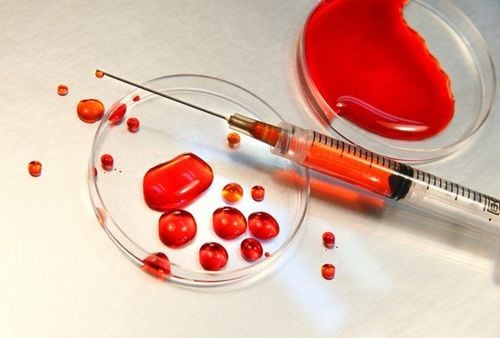
Nên thực hiện cấy máu theo dõi mỗi ngày để xác định thời điểm diệt sạch Candida trong máu
5.2. Treatment of candidaemia in patients with agranulocytosis
Echinocandin (caspofungin: loading dose 70 mg, maintenance 50 mg/day; micafungin: 100 mg/day; anidulafungin: loading dose 200 mg, maintenance 100 mg/day) is recommended as first-line therapy (strong recommendation; level of evidence medium). AmB lipid formulation (3-5 mg/kg/day) is an effective alternative but is not attractive to clinicians because of its potential toxicity (strong recommendation; moderate quality of evidence). . 3. Fluconazole, loading dose of 800 mg (12 mg/kg), followed by 400 mg/day (6 mg/kg) maintenance is an alternative for clinically stable patients with no history of drug use. previous azole (weak recommendation; low quality of evidence).
4.Fluconazole 400mg/day (6mg/kg) can be used for de-escalation in patients with persistent, clinically stable agranulocytosis, sensitive isolates and evidence of eradication of Candida. in the blood (weak recommendation; low quality of evidence).
5.Voriconazole, 400mg (6mg/kg) every 12 hours for the first 2 doses, then 200-300 mg (3-4 mg/kg) twice a day, can be used in situations where coverage is needed add mycelia (weak recommendation; low quality of evidence). Voriconazole can also be used as de-escalation therapy in patients with agranulocytosis who are clinically stable, have evidence of blood candidiasis, and isolate strains susceptible to voriconazole (weak recommendation; level equal to voriconazole). low syndrome).
6.For C.krusei infections, echinocandin, AmB lipid preparations, or voriconazole (strong recommendation, low quality of evidence) are recommended.
7.Minimum duration for treatment of candidaemia without distal organ complications is 2 weeks. After evidence of blood eradication of Candida, agranulocytosis and symptoms of candidaemia were reversible (strong recommendation; low quality of evidence).
8.Ophthalmoscopy should be performed during the first week after recovery of agranulocytosis (strong recommendation; low quality of evidence).
9.In patients with agranulocytosis, CVC is not the primary source of fungal infection, but other sources of infection (eg, the gastrointestinal tract). Therefore, withdrawal of CVC should be considered on an individual basis (strong recommendation; low quality of evidence).
10. Consider infusion of granulocytes mobilized after G-CSF injection for persistent candidemia with pre-existing persistent agranulocytosis (weak recommendation; low quality of evidence).
Please dial HOTLINE for more information or register for an appointment HERE. Download MyVinmec app to make appointments faster and to manage your bookings easily.
REFERENCES / RELATED DOCUMENTS
Pappas PG, Lionakis MS, Arendrup MC, Ostrosky-Zeichner L, Kullberg BJ. Invasive candidiasis. Nature Reviews Disease Primers. 2018;4(1):18026. doi: 10.1038/nrdp.2018.26. Kullberg BJ, Arendrup MC. Invasive Candidiasis. The New England journal of medicine. 2015;373(15):1445-56. doi: 10.1056/NEJMra1315399. Ostrosky-Zeichner L, Pappas PG, Shoham S, Reboli A, Barron MA, Sims C, et al. Improvement of a clinical prediction rule for clinical trials on prophylaxis for invasive candidiasis in the intensive care unit. Mycoses. 2011;54(1):46-51. doi: 10.1111/j.1439-0507.2009.01756.x. Clancy CJ, Nguyen MH. Finding the "missing 50%" of invasive candidiasis: how nonculture diagnostics will improve understanding of disease spectrum and transform patient care. Clinical infectious diseases : an official publication of the Infectious Diseases Society of America. 2013;56(9):1284-92. doi: 10.1093/cid/cit006.




